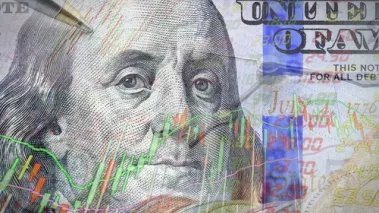Table of Contents
How the US economy is bolstered by the free marketplace of ideas

Nicholas Baum is a rising sophomore at Columbia University and a FIRE summer intern.
Many factors go into making accurate and educated monetary policy decisions, but one crucial factor seems to slip under the radar of many economists: freedom of speech. After all, in any policy area, you must familiarize yourself with a diversity of perspectives to achieve a comprehensive understanding of an issue.
The Federal Reserve System was designed in part to reflect the importance of diversity of thought. While the chairman and board of governors reside in Washington, D.C., the Fed as a whole is not just one big national bank — though we often think of it that way. Rather, it is split into 12 regional reserve banks. Larger cities like New York and Chicago, and smaller cities like Cleveland and Minneapolis, each have their own reserve bank that is intended to represent the interests of their surrounding economic regions.
The Federal Reserve System was designed in part to reflect the importance of diversity of thought.
All of these federal reserve banks meet at the Federal Open Market Committee (FOMC) where the chairman and board of governors in Washington, D.C., as well as leaders of various reserve banks, come together to vote on and discuss monetary policy.
So why is it so important that the leader of the Kansas City reserve bank has as much of a chance to speak, let alone to vote, as the leader of the New York Fed? Consider what the 19th-century philosopher John Stuart Mill writes in his treatise, “On Liberty”:
The peculiar evil of silencing the expression of an opinion is, that it is robbing the human race; posterity as well as the existing generation; those who dissent from the opinion, still more than those who hold it. If the opinion is right, they are deprived of the opportunity of exchanging error for truth: if wrong, they lose, what is almost as great a benefit, the clearer perception and livelier impression of truth, produced by its collision with error.
In other words, regardless of whether an idea is right or wrong, we arrive at a better understanding of what is true and accurate by allowing it to be expressed. This easily holds true within the context of the Federal Reserve System, as reserve banks have different cultures attracting people who independently develop new ideas that contribute to monetary policy decisions.
The Federal Reserve Bank of Richmond, for example, is known for advocating for more traditional lending standards at times of financial crisis. Its former president, Jeffrey Lacker, vocally opposed the Fed’s decision to purchase massive amounts of mortgage-backed securities in November 2008, as he predicted that it would lower interest rates on mortgages at the expense of higher interest rates on all other assets. Instead, he preferred that the Fed purchase government securities. Two years later, in November 2010, the other banks came around to this view, unanimously deciding to purchase government securities instead of mortgage-backed securities.
In recent years, the Federal Reserve Bank of St. Louis has developed a reputation for being “inflation hawkish,” or more concerned with higher inflation rates. In May 2021, when post-pandemic inflation rose but the Fed hadn’t yet taken any measures to address it, St. Louis’ then-President James Bullard unpopularly argued that rising prices in the aftermath of pandemic lockdowns would be permanent (not “transitory”) and that action was needed. Bullard turned out to be correct, and the FOMC eventually increased interest rates to fight this long-lasting inflation — likely more severely than would have been needed had it taken the action he favored back in 2021.
This trend of reserve bank ideas becoming the monetary norm can be traced back decades. In the late 1970s, the Minneapolis Fed introduced the now common practice of taking public expectations into account when making monetary decisions. A decade earlier, the St. Louis Fed successfully convinced the FOMC to focus on changes in the money supply rather than changes in interest rates. As former president of the San Francisco Fed John J. Balles put it, “[Reserve bank presidents’] input into the information-gathering process helps the Fed anticipate changing trends in the economy … that is difficult to get from analysis of data alone.”
When it comes to making more educated monetary decisions, listening to these different forecasts turns out to be an incredibly wise strategic choice. After all, the FOMC ultimately adopted the actions for which Lacker, Bullard, and previous reserve banks passionately yet unpopularly advocated. In doing so, these reserve bank leaders may have greatly assisted in bringing about economic recovery after a recession.
That one can observe the importance of free speech and a “marketplace of ideas” even in something as complex and esoteric as monetary policy at the Federal Reserve should teach us an important lesson about how we manage our organizations, institutions, and classrooms.
No matter the topic, recognizing the value of freedom of speech for everyone — even those with unpopular perspectives — is absolutely critical for arriving at comprehensive and well-informed outcomes.
Recent Articles
Get the latest free speech news and analysis from FIRE.

FIRE's 2025 impact in court, on campus, and in our culture

The trouble with banning Fizz

VICTORY: Court vindicates professor investigated for parodying university’s ‘land acknowledgment’ on syllabus


